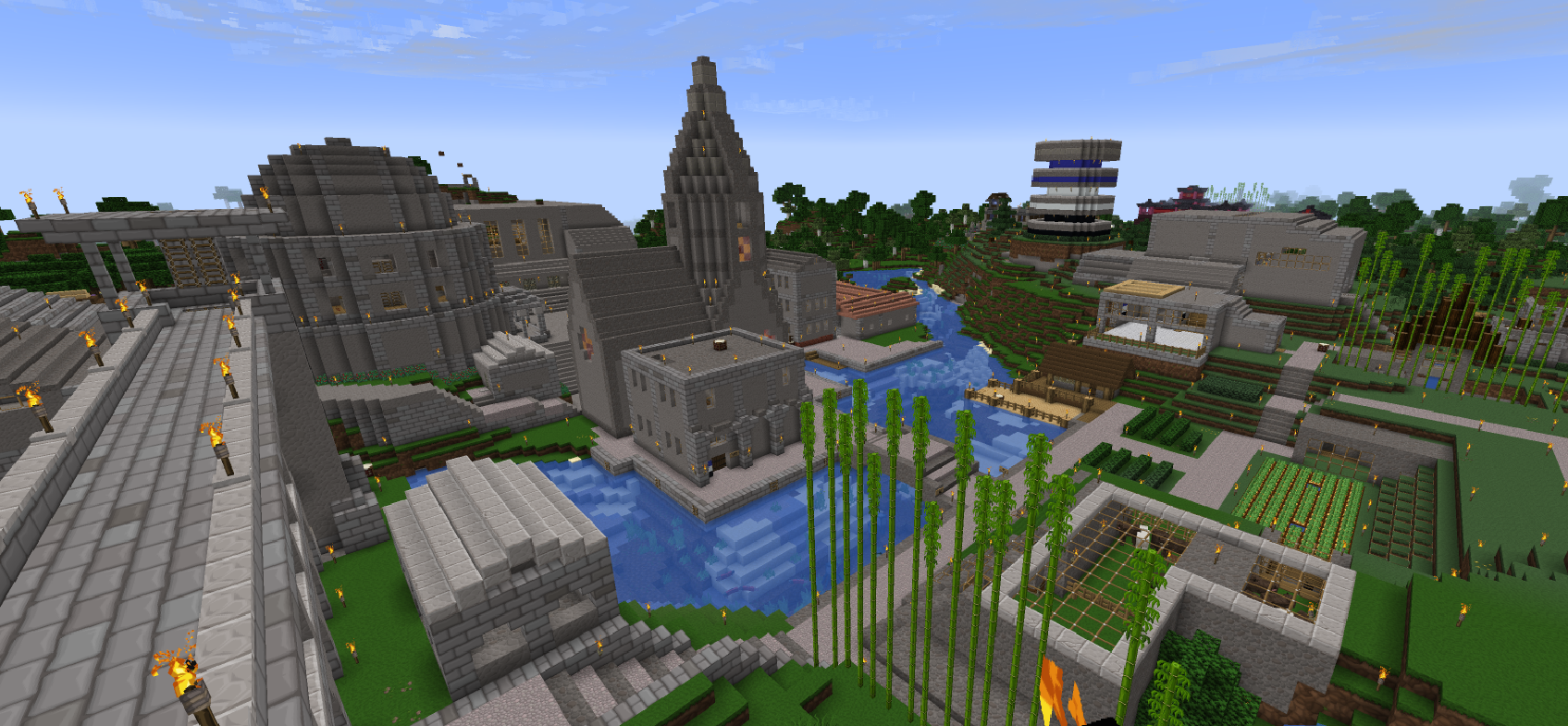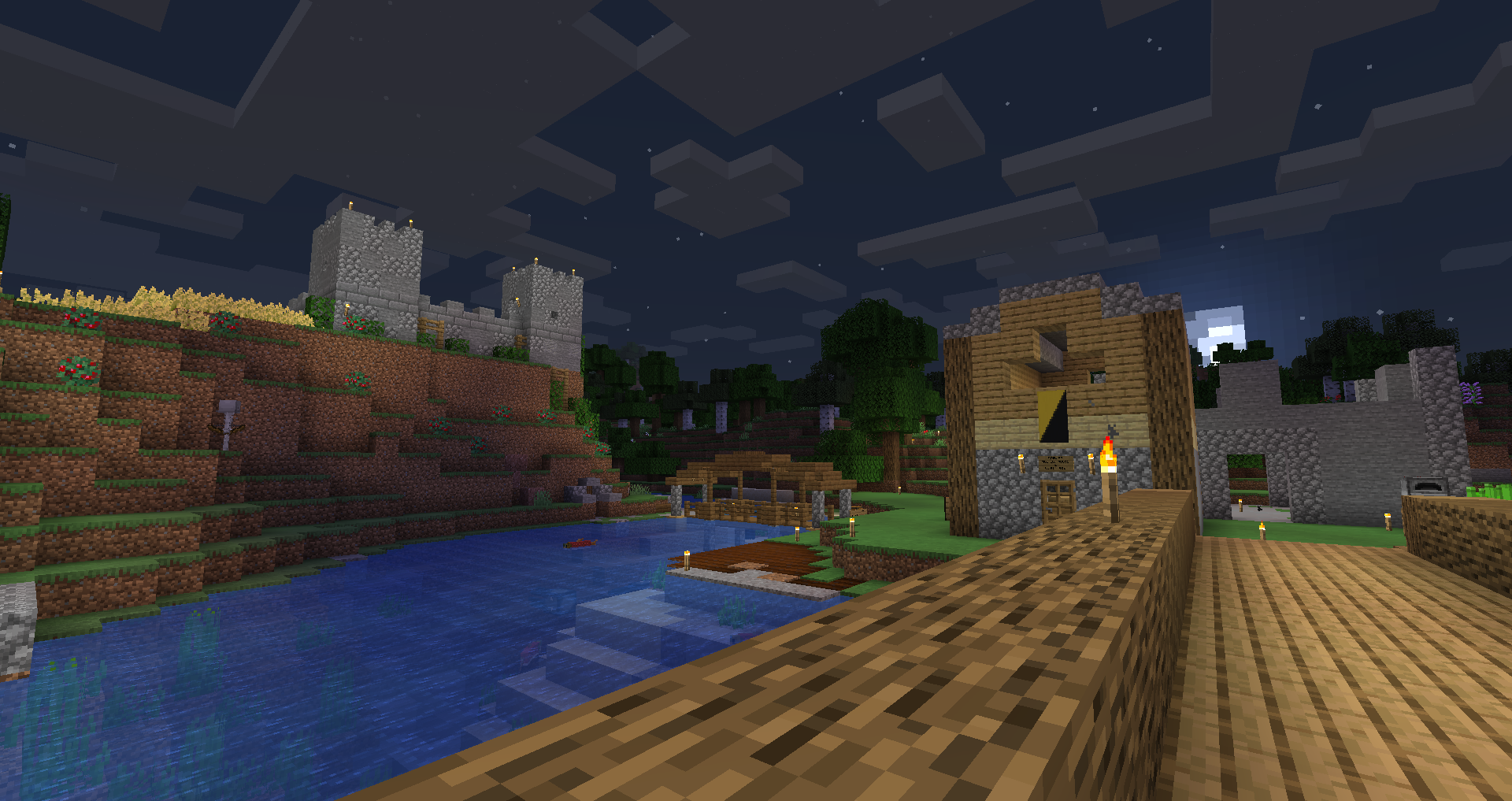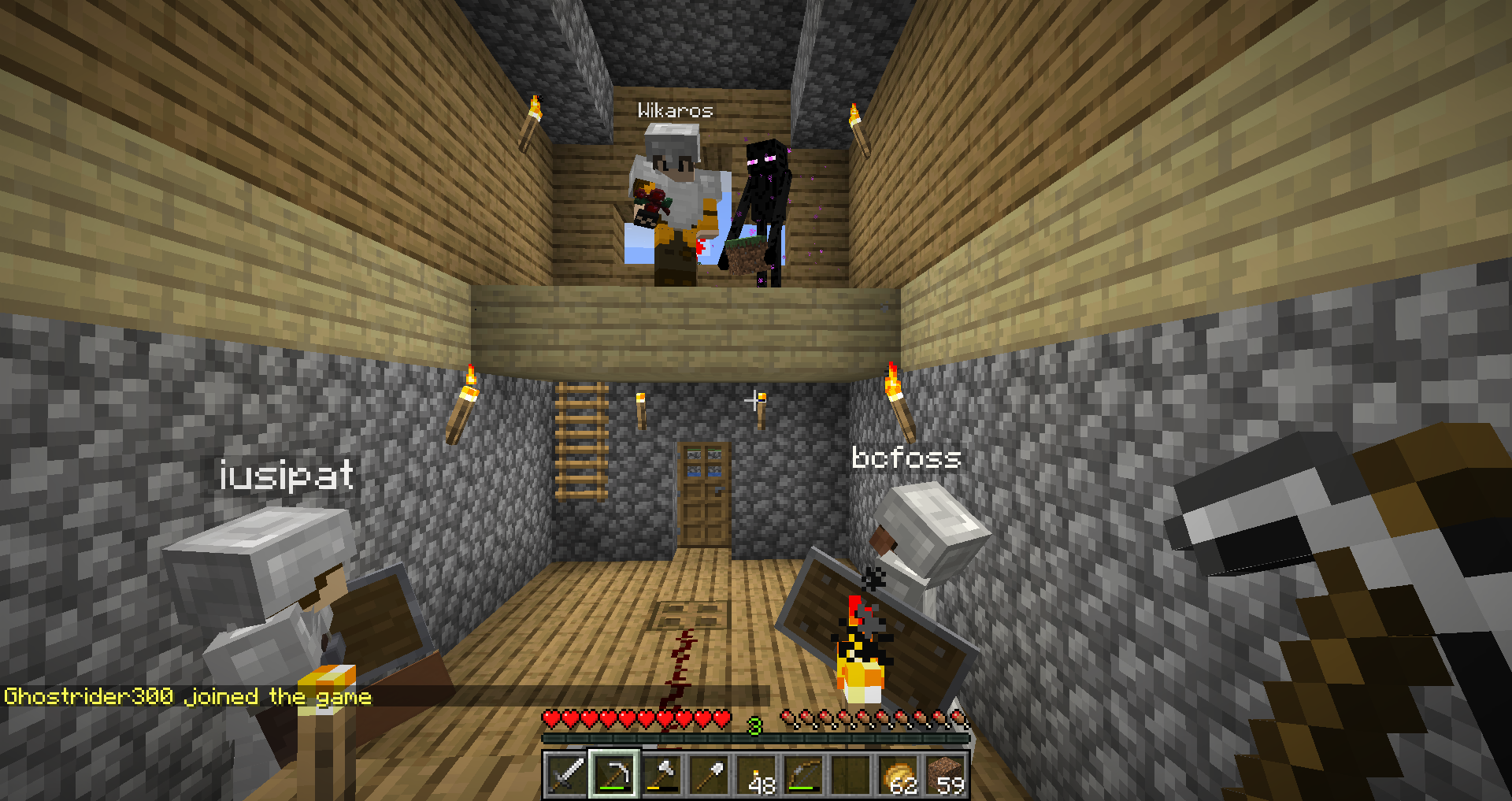Pushkino
Pushkino (Latin: Puscinus) is the capital and the largest city in the Nation of Pushkino taking place on the Fvonny's 3 server. The city stands on the Ershui River, with at its height a population of 7 residents within the city limits. Pushkino was at one point both the region's and the server's largest city.

History
Early Settlement
Player Cflip_ and Wikaros founded the village of Finberg in the very early days of the server. jusipat and flufyking made a base of operations nearby with the intent of subjugating the fledgling nation, but soon changed their minds and were incorporated into the settlement. The first elections were held and flufyking was elected to his first term unanimously as President of Finburg with a stunning 100% of the vote. The second Finburg elections resulted in a stunning 100% of the vote going to player bcfoss, who was the last President of Finburg.
Anarcho-capitalist Period
Finburg, soon after the server started and after the election of bcfoss, committed itself to the ideals of an Anarcho-Capitalist utopia. Initial structures were kept to the east of the Ershui, comprising of a Castle, underground complex, and a smokehouse. Later settlers constructed temporary slums on the western banks of the Ershui, though a proper bridge across the river was not constructed until the completion of the town hall. The largest and last major structure built during the Anarcho-capitalist period was the Temple of Commerce, which served as a central market and temple for the settlement. Initially the city had no central government and was simply a collection of private dwellings, but a dispute between several land owners prompted the intervention of Wikaros, who agreed to help one of the factions if he was made king of Finberg. After the incident was settled, Wikaros cooperated with bcfoss to construct a sheep and chicken ranch in order to fund royal initiatives, but the enterprise underperformed and left the government stagnant and ineffectual.
The Ancap ideas were very popular to many, even if its application in Finburg stifled progress at times. This core set of ideas would eventually be the base Ancapium was founded upon during the Pushkino Civil War.
Authoritarian Period

After a prolonged period of stagnancy, a group of citizens were unhappy with how the city felt run-down and unmaintained. This faction seized power and had all Anarcho-capitalist flags replaced with a newly designed Pushkino flag. Pushkino rapidly modernized and expanded under the guidance of the new government, even to the point of demolishing historical buildings if they served little purpose, such as the old town hall and slums. The rapid change in government is believed to be the leading cause of the Pushkino Civil War, as the rapid change of character in the city and defilement of the Temple of Commerce caused a culture shock among a considerable portion of the population whom remained sympathetic to the previous Ancap ideals. Despite the severity and speed of the transformations, the Pushkino government ultimately proved beneficial to the city. As a member of the ruling council with considerable fortunes, Ghostrider300 oversaw massive construction projects (structures, railroads, etc.) that heavily urbanized the formerly rural west side of the city. A massive bank and accompanying plaza were soon followed by two apartment complexes (Wikhaus and Worker's Joy) and the Lucian Amphitheatre, the latter of which was personally funded by party official Wikaros. The Pushkino Civil War coincided with this unprecedented growth, though acts of terrorism performed by Ancap reactionaries were initially contained to the older east quarter of Pushkino rather than the new structures. The war saw little impact on the growth of Pushkino. Rapid urbanization increased demand for cement, which called for the construction of a cement factory on the southern city limits. With the conclusion of the civil war and founding of Ancapium, Pushkino officials were motivated to expand infrastructure far to the west in order to justify land claims on the border with Ancapium. Though these provocations were steadfastly ignored by Pushkino's growing western neighbor. A communal farming colony was founded halfway between the two cities, though by this time Pushkino's executive vigor was fading and the commune saw little investment.
Decline
After the conclusion of the civil war Pushkino experienced a pronounced decline both in influence and prestige. Communal farming ventures on the edges of the state were left in a state of dilapidation, and growth of the city itself ground to a halt. Close to a third of the population emmigrated to the east in order to form a short-lived Anarcho-Primitivist settlement named Lil' Mike Heights, while the rest entered a period of inactivity. Conversely, during this time Ancapium was experiencing a golden age of economic growth and expansion, urbanizing at a rate reminiscent of Pushkino's meteoric rise under the authoritarians. The prestige of Pushkino gradually faded.
Anarcho-capitalist Revivalism
Pushkino's decline promoted the emergence of repressed movements. With support from Ancapium, Anarcho-capitalist revivalist bcfoss seized power and restored Pushkino to Anarcho-capitalism. These actions proved controversial, but like the previous revolution they breathed new life into the city. Anarcho-primitivists and former officials returned en masse to Pushkino to protest the changes, quickly doubling the active population. Ironically, the support from Ancapium would be the last international action the nation performed, as it was soon to be engulfed in its own troubles following the War for the End.
After untold days of repression, Pushkino was returned to Anarcho-capitalism, though the return to the old ways was controversial among Pushkino residents. Pushkino flags were torn down and replaced with the old Ancap banners. The revivalist bcfoss's rise to power was admittedly opportunistic and relied on the waning support from Ancapium, but bcfoss planned several building projects to assuage criticisms. Several former Pushkino officials cited the NAP (non-aggression principle) as a protection against the removal of Pushkino flags from private property, to which bcfoss had reluctantly conceded to.
Pushkino's Golden Era
Pushkino at this time saw the greatest number of players residing within, with numerous fights in the arena and a lively economy, Pushkino had rebounded from its previous political turmoil. Player seranae created many shops, and settled in the city along with Curbanator who settled on the outskirts. Following the fall of Lil Mike's Heights and Ancapium, the majority of the server once again lived in Pushkino again, as jusipat constructed his estate, Wikaros began work on the Red District.
Operation Bonkers
Main article: Operation Bonkers

Player jusipat had ideas of a new order within Pushkino, and invited others into a conspiracy that was unlike any other on the server. It started via the formation of the Battle Tower and the cutting of the railroad network from across the Ershui River. All bridges were also destroyed and a fence put on either sides of the river.
Culture
Pushkino always retained a strong and vibrant culture, dynamic through its constantly evolving history.
Language
In addition to English, Pushkino has public signs in several other languages. Officials of the Authoritarian Period were prolific in the promotion of Russian and Chinese on public signs, while the Ancap Revivalist(s) have translated signs into latin. The fact that each language is only known by only a fraction of Pushkino's population assures that any given citizen of Pushkino cannot be expected to understand every sign written in Pushkino. There remains a tiny amount of French promoted by player jusipat from the pre-Authoritarian period, but it remains wholly insignificant culturally.
Cuisine
Gallery
-
Pushkino during its Anarcho-Capitalist days.
-
Players gathered in the Finburg Auction House.

